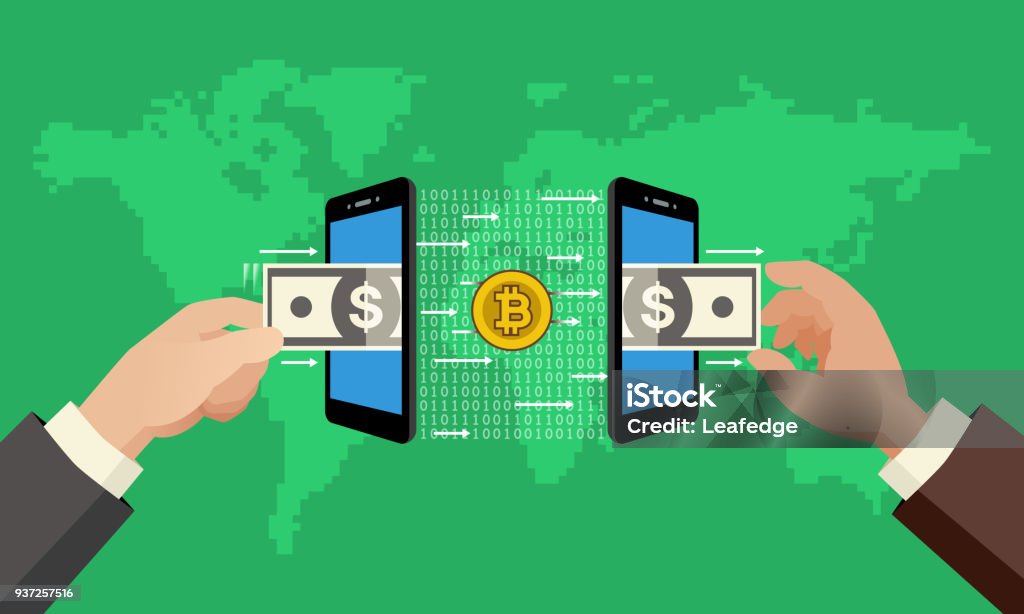[ez-toc]
Introduction

Cryptocurrency is a game-changer, especially in Latin America’s remittance market. You might be wondering, what exactly does that mean? Well, let’s break it down together. Imagine you’re working abroad, maybe in the United States, and you want to send money back home to your family in Mexico or El Salvador. Traditionally, you’d use a bank or a service like Western Union. But these methods are expensive and slow. This is where cryptocurrency steps in, offering a faster, cheaper, and more accessible way to transfer money across borders.
Overview of the Remittance Market in Latin America
Remittances are incredibly important to Latin America. In simple terms, remittances are the money sent by people working in foreign countries back to their families in their home countries. In 2023, Latin America received about $155 billion in remittances. That’s a huge amount of money, and it’s critical for the everyday survival of millions of families in the region. Countries like Mexico, El Salvador, and the Dominican Republic rely heavily on these funds to boost their economies. For example, in El Salvador, remittances make up nearly a quarter of the country’s GDP, in 2023 it was 23.94%. This money is used for everything from buying groceries to paying school fees and medical bills.
The Current State of Remittances in Latin America
Remittances are not just a lifeline; they’re a cornerstone of economic stability in Latin America. Take Mexico, for instance. As of June 2023, remittances to Mexico alone reached a whopping $63.3 billion. This money mostly comes from Mexicans working in the U.S., and it’s vital for supporting their families back home. Now, think about how this money gets there. The traditional way is through banks or money transfer services like Western Union. But these services aren’t perfect—they charge high fees, and the transfers can take days to process. In some cases, families are left waiting for weeks for the money they desperately need.
Challenges with Traditional Remittance Methods
Traditional remittance methods come with their own set of headaches. High fees are a big problem. Imagine sending $100 back home and realizing that $10 to $15 of that is eaten up by fees. That’s money that could have been used to buy food or pay for utilities. Then, there’s the issue of time. Transfers can take days, and in some cases, weeks, especially if you’re sending money to a rural area where banks are few and far between. And don’t even get me started on the paperwork and identification required. For many people in Latin America who don’t have access to traditional banking services, these barriers are almost impossible to overcome.
How Cryptocurrency is Revolutionizing Remittances

Lower Transaction Costs
Cryptocurrency offers a refreshing alternative to traditional remittance methods by drastically cutting down transaction costs. How? By eliminating the middlemen. In a traditional transaction, banks and money transfer services act as intermediaries, taking a cut of the money you send. But with cryptocurrency, you’re essentially sending money directly from your wallet to your family’s wallet. Companies like Bitso, a popular cryptocurrency exchange in Mexico, are leading the way. Bitso processed over $1 billion in crypto-based remittances in 2023, showing a 400% increase from the previous year. That’s a huge saving for families who need every dollar they can get.
Faster and More Efficient Transfers
Speed is another major advantage of using cryptocurrency for remittances. Traditional transfers can take days to complete, but with cryptocurrency, the transaction is almost instantaneous. Imagine being able to send money to your family in just a few minutes, no matter where you are in the world. This can be a game-changer, especially in emergencies when your family needs money right away. Blockchain technology, which underpins cryptocurrencies, allows for these fast and secure transactions by recording them on a decentralized ledger. This means that the transaction is not only fast but also safe and transparent.
Increased Financial Access and Inclusion
Financial inclusion is another significant benefit of using cryptocurrency for remittances. In Latin America, many people don’t have access to traditional banking services. In fact, around 50% of adults in the region are unbanked. This means they don’t have a bank account, making it difficult to receive remittances. But with cryptocurrency, all you need is a smartphone and an internet connection. You can receive and manage your money without needing a bank account. This opens up financial services to millions of people who were previously excluded, allowing them to save, invest, and participate in the global economy.
Key Players in the Crypto Remittance Space

Bitso (Mexico)
Bitso is one of the key players in the crypto remittance space, especially in Mexico. Founded in 2014, Bitso has grown to become the largest cryptocurrency exchange in Latin America. In 2023, Bitso facilitated over $1 billion in crypto remittances between the U.S. and Mexico, representing about 4% of Mexico’s total remittance market. What’s impressive is that Bitso managed to achieve a 400% year-on-year growth, showing just how much potential there is in the crypto remittance market. By offering lower fees and faster transfers, Bitso is helping thousands of families receive more of the money sent to them.
Ripple (XRP) and Partnerships in Latin America
Ripple is another major player in the crypto remittance market. Ripple’s blockchain technology, which uses its native cryptocurrency XRP, is designed for cross-border payments. Ripple has partnered with several financial institutions in Latin America to facilitate faster and cheaper remittance services for example; Colombia, and Brazil. By using Ripple’s blockchain, these institutions can settle transactions in seconds, compared to the days it takes using traditional methods. This makes the process more efficient and transparent, as every transaction is recorded on the blockchain.
Rebit and the Philippines-Latin America Connection
Rebit, a pioneering company in the crypto remittance space, focuses on facilitating remittances between the Philippines and Latin America using Bitcoin. This approach not only reduces the cost of sending money but also opens up new corridors for financial inclusion. The broader implications of such cross-continental solutions are profound, as they offer a model for using cryptocurrency to bridge financial systems across different regions, potentially transforming the global remittance landscape.
Challenges Facing Crypto Remittances in Latin America
Regulatory Uncertainty
Regulatory uncertainty is one of the biggest hurdles to the growth of crypto remittances in Latin America. Different countries have different regulations regarding cryptocurrency, and this can create confusion for both service providers and users. For example, El Salvador made headlines by adopting Bitcoin as legal tender in 2021, aiming to boost financial inclusion and reduce remittance costs. However, other countries, such as Bolivia, have implemented stringent bans on cryptocurrencies, reflecting concerns over financial stability and potential misuse, though the ban was lifted on 28 June 2024. This patchwork of regulations creates operational challenges for companies, as they must navigate a complex legal environment, leading to increased compliance costs and hindering cross-border scalability. A unified regulatory approach could help unlock the full potential of crypto remittances by providing clarity and fostering innovation
Volatility of Cryptocurrencies
Volatility is another challenge when it comes to using cryptocurrencies for remittances. Unlike traditional currencies, cryptocurrencies like Bitcoin and Ethereum can be highly volatile, meaning their value can change rapidly. This can be a problem for people receiving remittances because the value of the money they receive can fluctuate dramatically. For example, you might send $100 worth of Bitcoin today, but by the time it reaches your family, it could be worth only $90. To address this issue, many people are turning to stablecoins, which are cryptocurrencies pegged to stable assets like the U.S. dollar. Stablecoins offer the benefits of cryptocurrency without the wild price swings, making them a more reliable option for remittances.
Infrastructure and Technological Barriers
The adoption of crypto remittances in Latin America is also impeded by significant infrastructure and technological barriers. While urban areas in countries like Brazil and Mexico have seen rapid growth in digital currency usage, rural regions often lag due to limited internet access and low levels of digital literacy. In these areas, the lack of reliable technological infrastructure makes it challenging for individuals to access and use cryptocurrency services effectively. Furthermore, the complexity of using digital wallets and understanding blockchain technology can deter potential users, particularly those unfamiliar with digital finance. Addressing these barriers requires a concerted effort to improve internet infrastructure, expand financial education, and develop user-friendly platforms that cater to the needs of all demographicsted effort to improve internet access and provide education on how to use digital currencies.
Opportunities for Growth and Innovation

The Rise of Stablecoins in Remittances
Stablecoins are becoming increasingly popular as a solution to the volatility problem in crypto remittances. Unlike traditional cryptocurrencies, stablecoins are pegged to the value of a stable asset, like the U.S. dollar, making them a more reliable option for remittances. For example, in countries like Argentina and Venezuela, where local currencies are highly volatile, people are turning to stablecoins to preserve the value of their money. The idea is to combine the best of both worlds—the efficiency and low transaction costs of cryptocurrency with the stability and trust of traditional fiat currencies. By maintaining a stable value, stablecoins offer a more reliable option for remittances, reducing the risk of value fluctuation during the transfer process.
In countries like Argentina and Venezuela, where local currencies are subject to hyperinflation and extreme devaluation, the appeal of stablecoins becomes particularly evident. For instance, in Argentina, the peso has lost over 50% of its value against the U.S. dollar in recent years. This economic instability has led many Argentinians to seek alternatives to preserve their wealth.
Stablecoins such as Tether (USDT) and USD Coin (USDC) are increasingly being used by individuals in these countries as a store of value and a medium for cross-border transactions. These stablecoins allow users to bypass the local currency altogether, converting their funds directly into a digital asset that holds its value. In Venezuela, where inflation reached over 1,000,000% at its peak, stablecoins have become a lifeline for families receiving remittances from abroad.
Expanding Financial Inclusion through Crypto
Cryptocurrency has the potential to bring more people into the financial system, especially those who are unbanked. By providing a simple and affordable way to send and receive money, crypto remittances can help people in remote areas access financial services for the first time. This can lead to greater economic opportunities and improved quality of life for millions of people in Latin America.
Crypto remittances represent one of the most impactful applications of cryptocurrency in advancing financial inclusion. Remittances—money sent by migrants to their families in their home countries—are a lifeline for millions of people, particularly in developing regions like Latin America. Traditionally, sending money across borders through banks or money transfer operators like Western Union involves high fees and lengthy processing times, especially for smaller amounts. These challenges can be particularly burdensome for low-income families who rely on every dollar sent.
Cryptocurrencies can significantly reduce these barriers. By enabling instant, low-cost transfers across borders, crypto remittances can help more people access financial services that were previously out of reach. For instance, a worker in the United States can send Bitcoin or a stablecoin to their family in Mexico, who can then convert it to local currency or hold it in a digital wallet. This process is often faster and cheaper than traditional methods, making it an attractive option for remittance senders and recipients alike.
Future Trends in Crypto Remittances
Increasing Adoption of Blockchain Technology
Blockchain technology is expected to continue growing in the remittance industry. Blockchain offers several advantages, including transparency, security, and efficiency. As more financial institutions and remittance companies adopt blockchain, we can expect to see even more innovation in this space. This could lead to faster, cheaper, and more secure remittance services for people in Latin America and around the world.
Regulatory Evolution and Standardization
Regulatory frameworks are also expected to evolve as governments recognize the potential of cryptocurrency for remittances. International organizations may play a role in establishing standardized regulations for cross-border crypto payments, which could help reduce uncertainty and foster adoption. As regulations become clearer, more people and businesses may feel confident using cryptocurrencies for remittances.
The Impact of Central Bank Digital Currencies (CBDCs)
Central Bank Digital Currencies (CBDCs) could also have a significant impact on the future of crypto remittances. CBDCs are digital versions of a country’s fiat currency and could be integrated with existing crypto remittance platforms. This could provide a bridge between traditional finance and the emerging crypto economy, making it easier for people to send and receive money across borders.
Conclusion
Cryptocurrency is reshaping Latin America’s remittance market, providing solutions to the region’s long-standing issues like high transaction costs, slow transfer speeds, and limited financial access. Platforms like Bitso and Ripple are leading the charge by using blockchain technology to make cross-border payments faster, cheaper, and more accessible. These innovations are not only reducing fees but also expanding financial services to unbanked populations, fostering greater financial inclusion across the region. As crypto continues to gain traction, it is poised to play an even more significant role in supporting families who rely on remittances for their livelihoods.
However, challenges remain. Regulatory uncertainty and the volatility of cryptocurrencies are major obstacles that could hinder widespread adoption. To fully realize the potential of crypto remittances, there needs to be clearer regulatory frameworks and the development of stable solutions like Central Bank Digital Currencies (CBDCs). Additionally, addressing infrastructure gaps and improving digital literacy will be crucial in ensuring that these innovations reach the most underserved communities. Despite these hurdles, the future of crypto in Latin America’s remittance market looks promising, with the potential to bring significant economic and social benefits to the region.